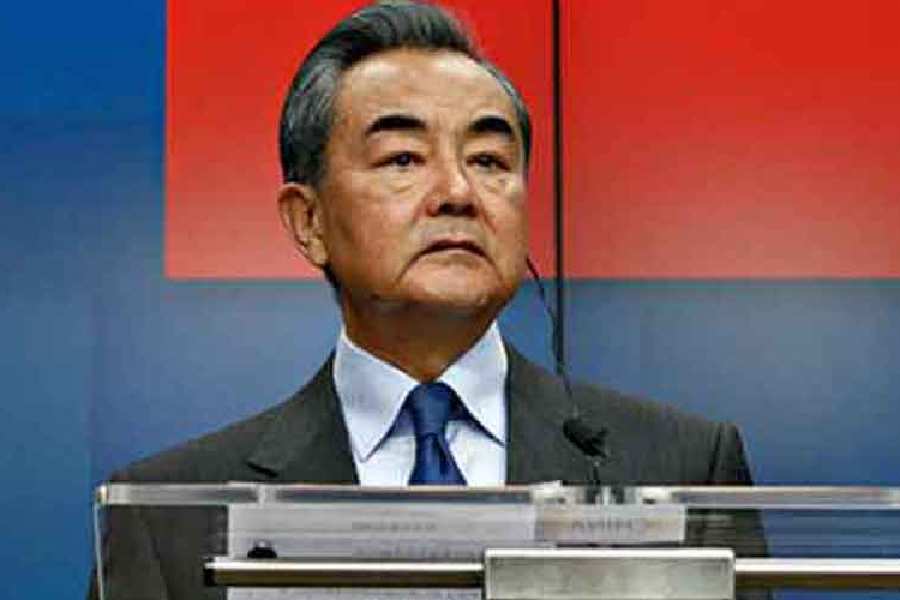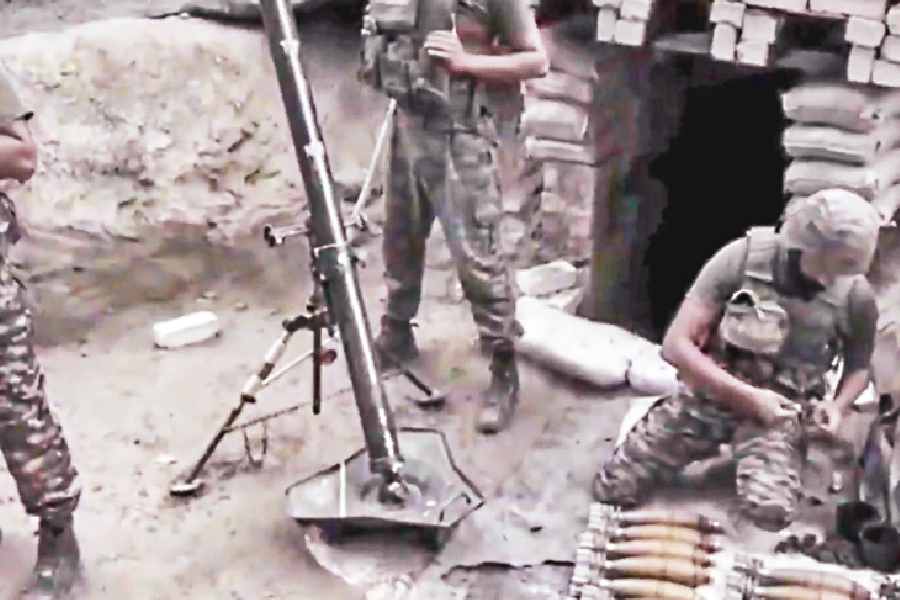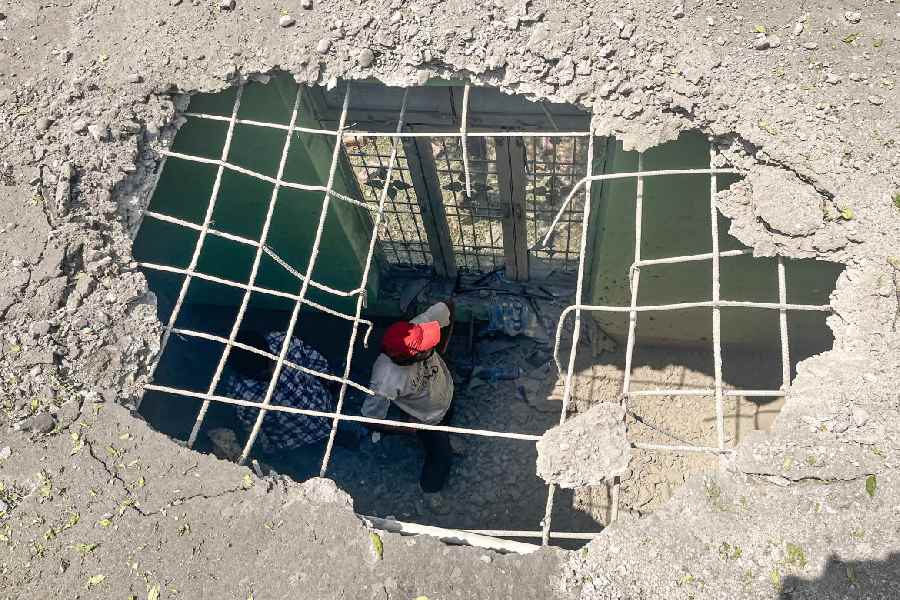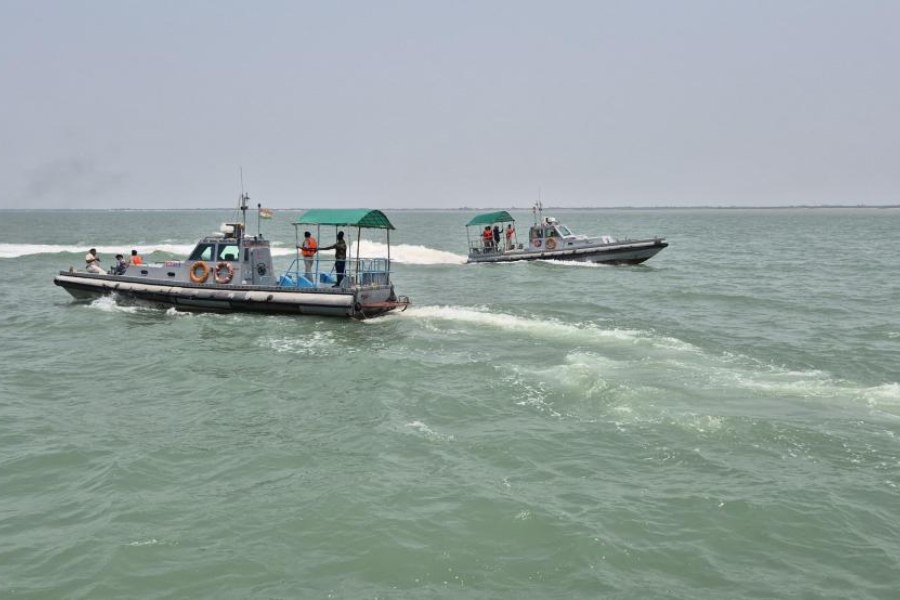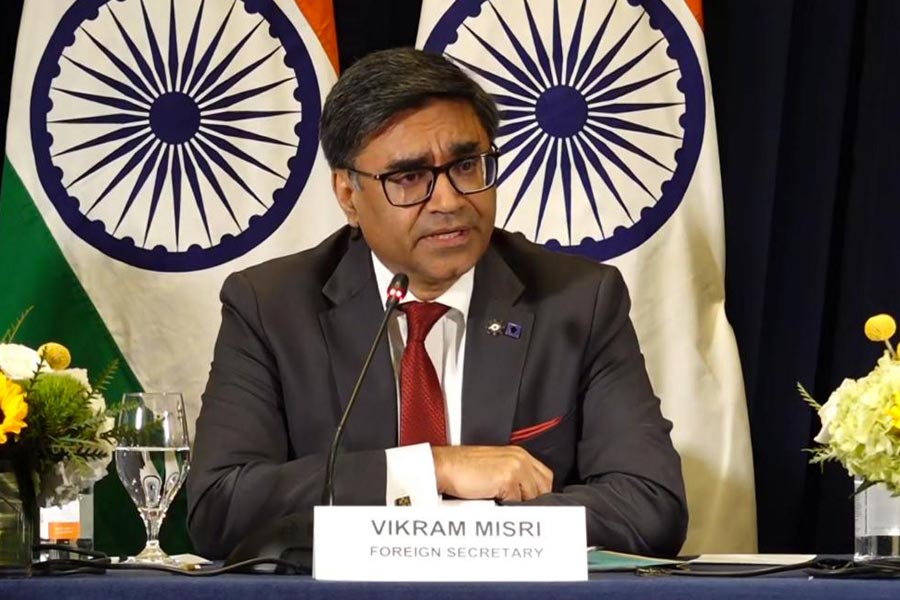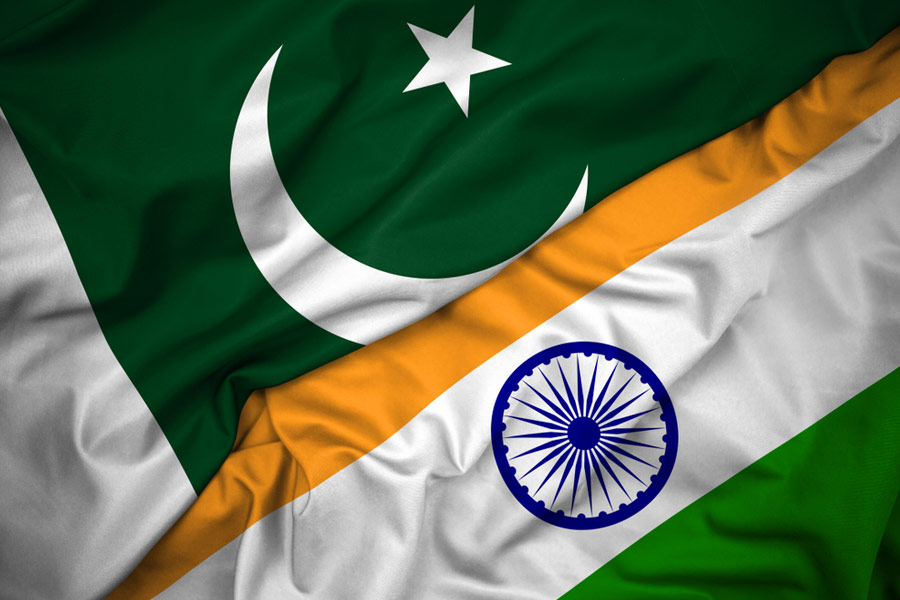 |
| The largest Afghan flag flutters behind soldiers at the inauguration ceremony on Wazir Akbar Khan hill in Kabul on September 10. (AFP) |
Kabul, Sept. 14: To find a flag as big as the one hoisted over Kabul’s historic Wazir Akbar Khan hill on Wednesday, you would have to go pretty far — possibly as far as a Walmart parking lot somewhere in the Great Plains in the US.
Flying from a specially erected flagpole more than 200 feet high — taller than the Statue of Liberty replica in Las Vegas — the black, red and green flag, at 97 by 65 feet, is big enough to drape over a Dreadnoughtus dinosaur (tail included). It is hundreds of square yards bigger than any other known Afghan banner.
Oddly, despite 13 years and more than half a trillion dollars of American investment in Afghanistan, when this country finally got its first supersized flag to fly over the capital last week, the donor was not from among the descendants of Betsy Ross, widely credited with making the first American flag.
 |
| Ghulam Mohammad Bazaz |
Instead, the Afghan mega-flag was personally presented by Sushma Swaraj, the foreign minister of India. The half-million-dollar gift was partly underwritten by businessman Naveen Jindal, whose Flag Foundation of India was founded to encourage Indian homes to fly their own flags.
Political pundits quickly noted the symbolism of India’s helping Afghanistan erect a flag big enough to be seen from the American surveillance blimp on the other side of the capital. The point would surely not be lost on Pakistan, which has always looked unfavourably at overtures between India and Afghanistan.
The Indian flag project is also seen as a subtle message to the Americans, who are bringing their combat mission in Afghanistan to a close this year without any guarantee yet of a future military role here.
“This will show Pakistan, and further weaken its role in Afghanistan,” said the political analyst Bashir Bezhan. “And for President Karzai, it would have a message to the West that his neighbouring powers are behind him.”
Flags have had a tattered history in Afghanistan, with a succession of different ones during the past 35 years of civil war and insurgency.
The Taliban, for instance, went counterintuitive, sticking with a plain white banner — until someone pointed out that that was for surrendering, and they added verses to it in black.
Before the raising of the mega-flag, a visitor could easily have driven across this sprawling capital of five million residents without seeing a single Afghan drapeau. Flagpoles are rare even in the government district.
A few years ago, there had been an Afghan flag just big enough to be seen from many parts of the city on the top of the mountain in its middle, Asmai Mountain, better known as TV Hill because of all its broadcasting towers. But the flag was gradually beaten to shreds in the wind and never replaced.
Then the Indian embassy came up with the idea of a gift of the giant flag, made of windproof synthetic textiles, and Jindal was eager to help underwrite it. “We thought this would be a good symbol of unity,” said Niteen Yeola, an Indian diplomat here.
The new flag is flying over Wazir Akbar Khan hill, next to the empty communist-era swimming pool once used by the Taliban for executions. The monument is being called the Menara Bayraq, or Flag Minaret.
The 15-tonne flagpole is high enough to make the flag visible from nearly all quarters of the city. The pole was flown in from India in segments, then erected to be earthquake-proof by Indian engineers.


